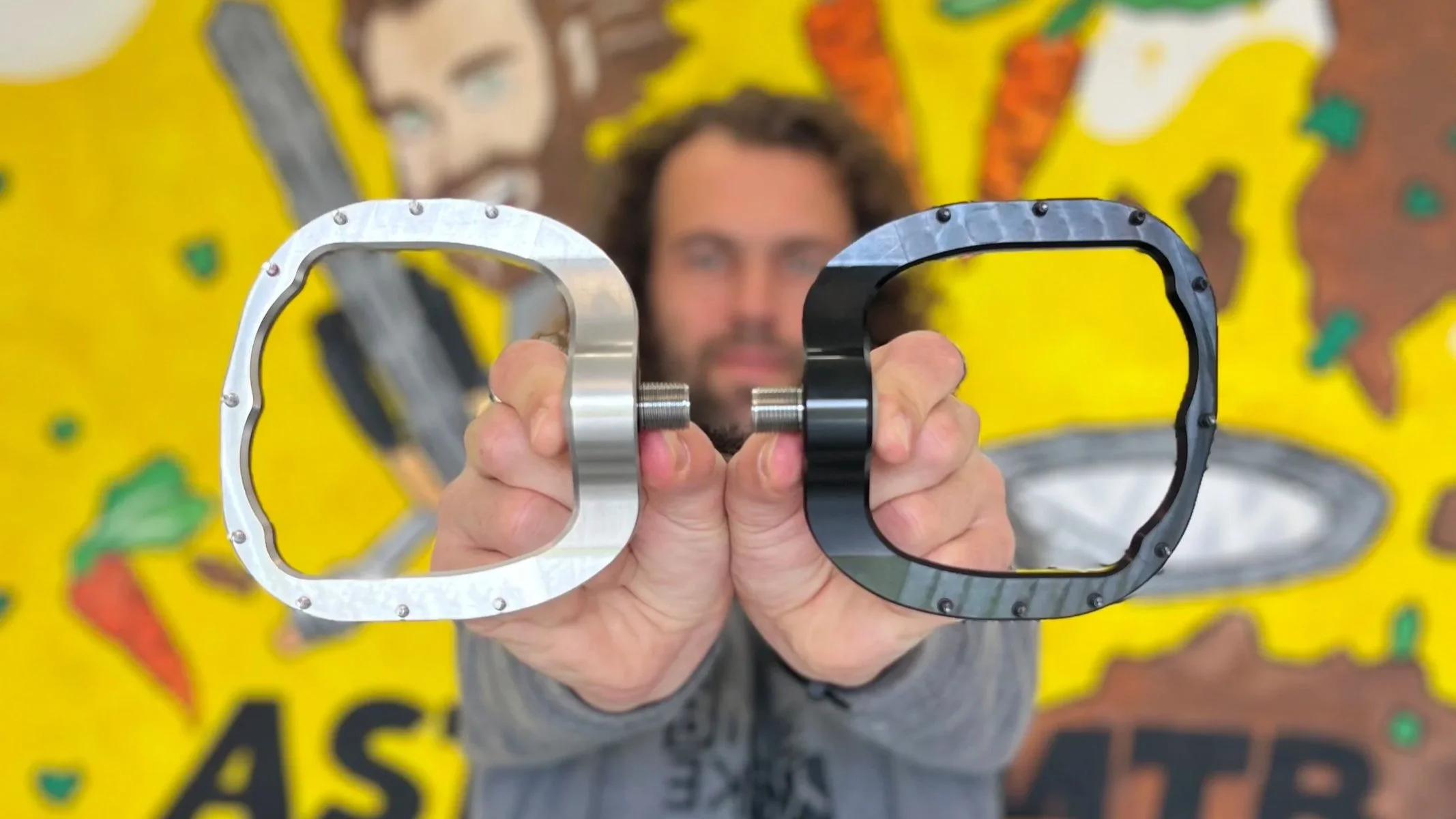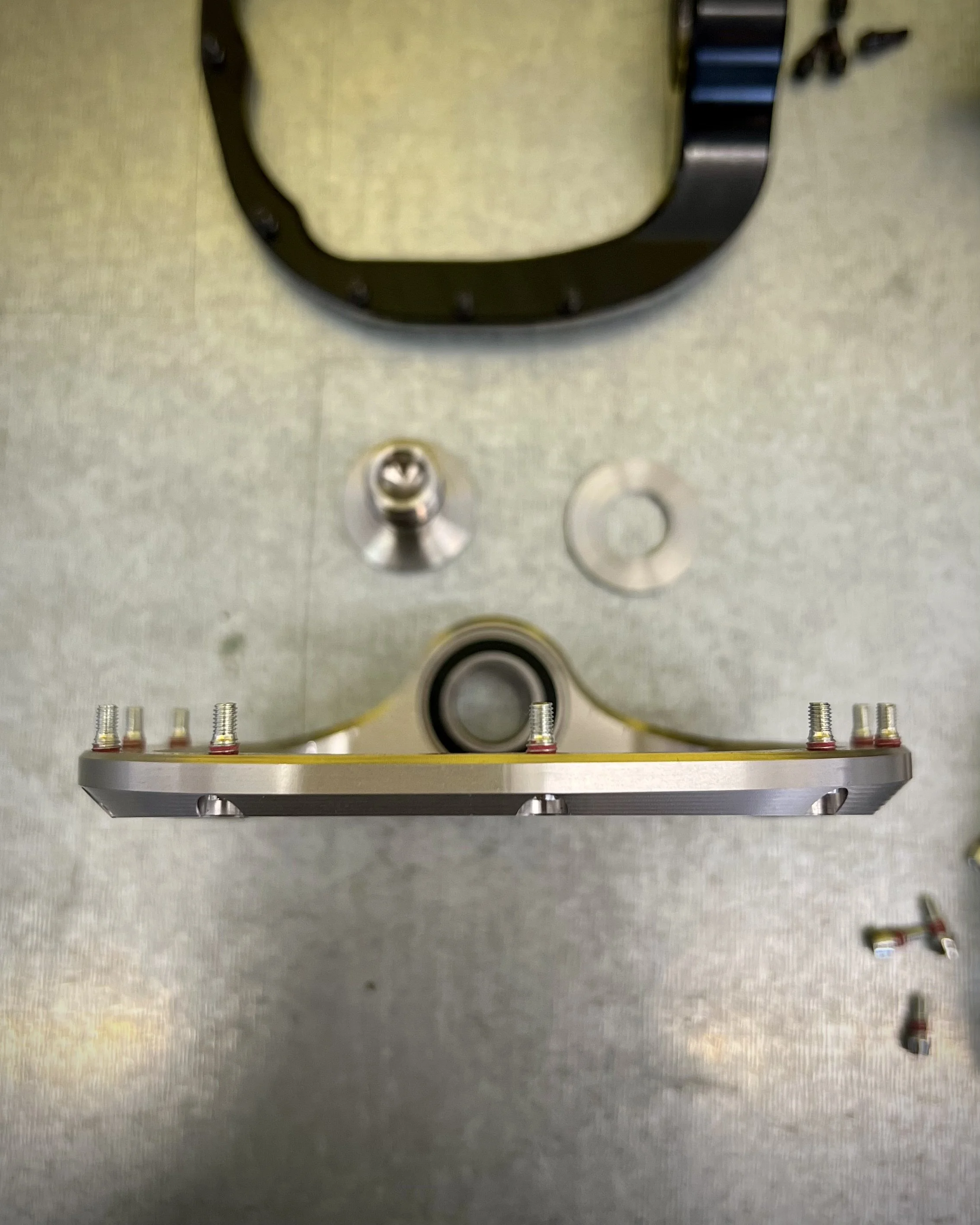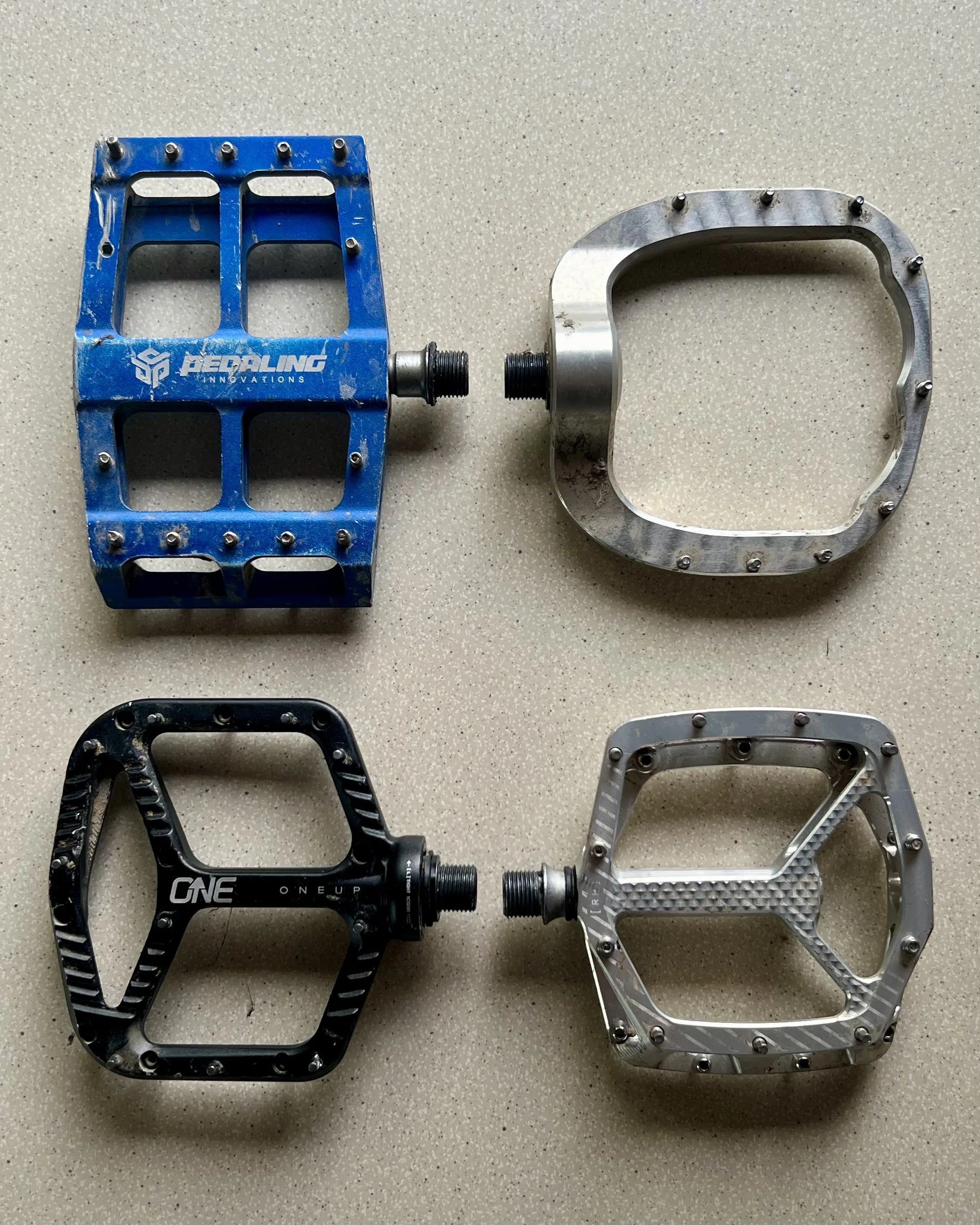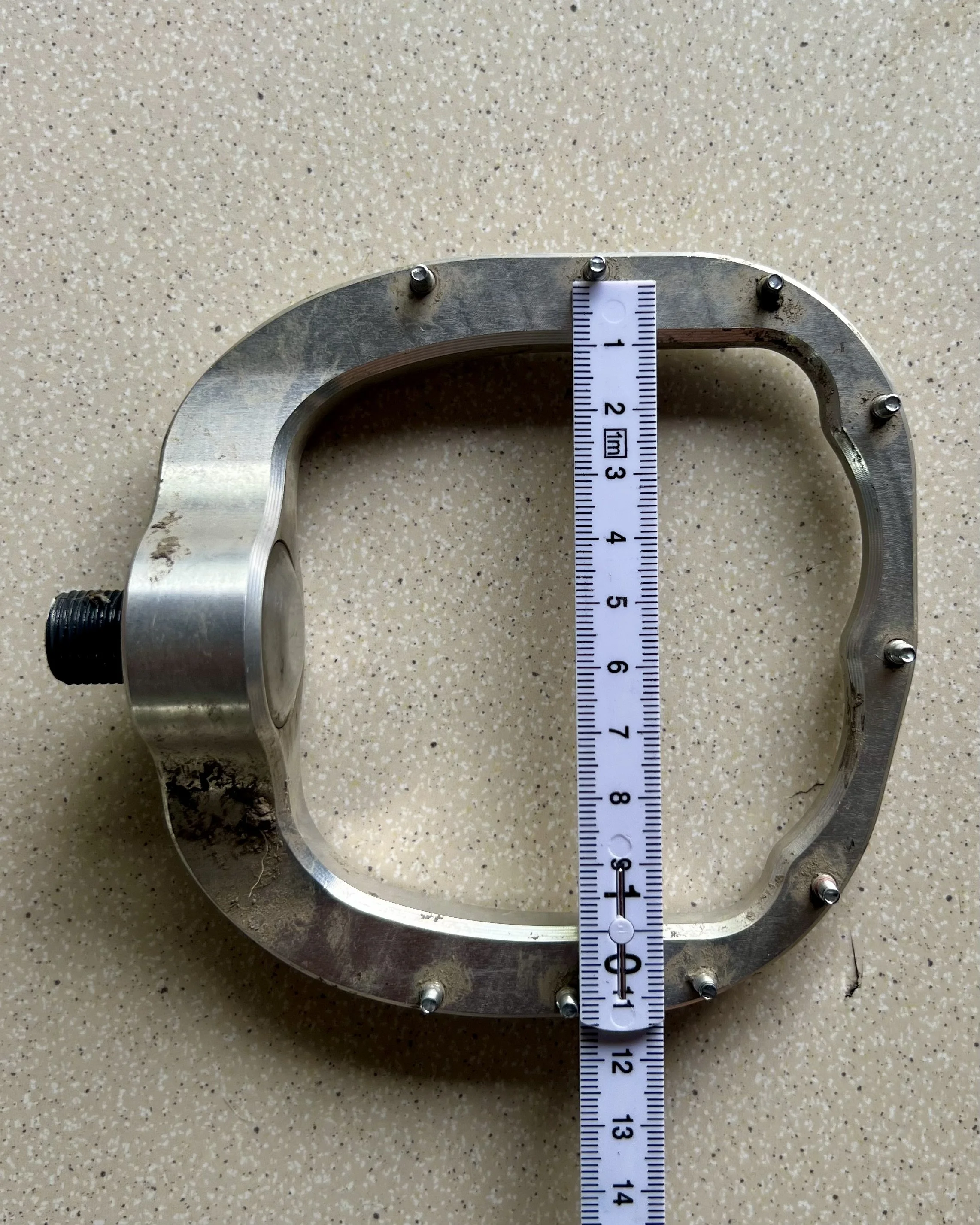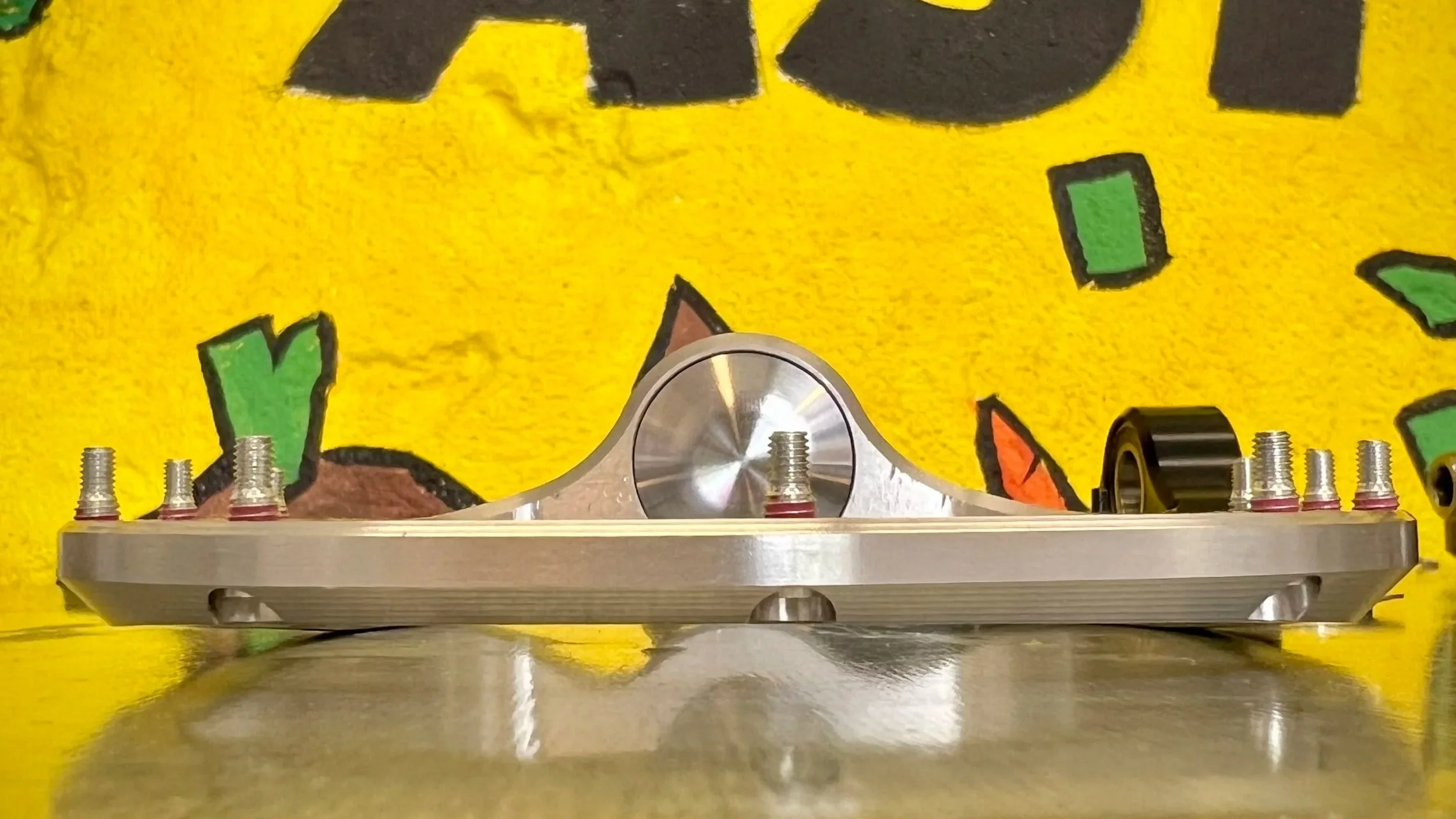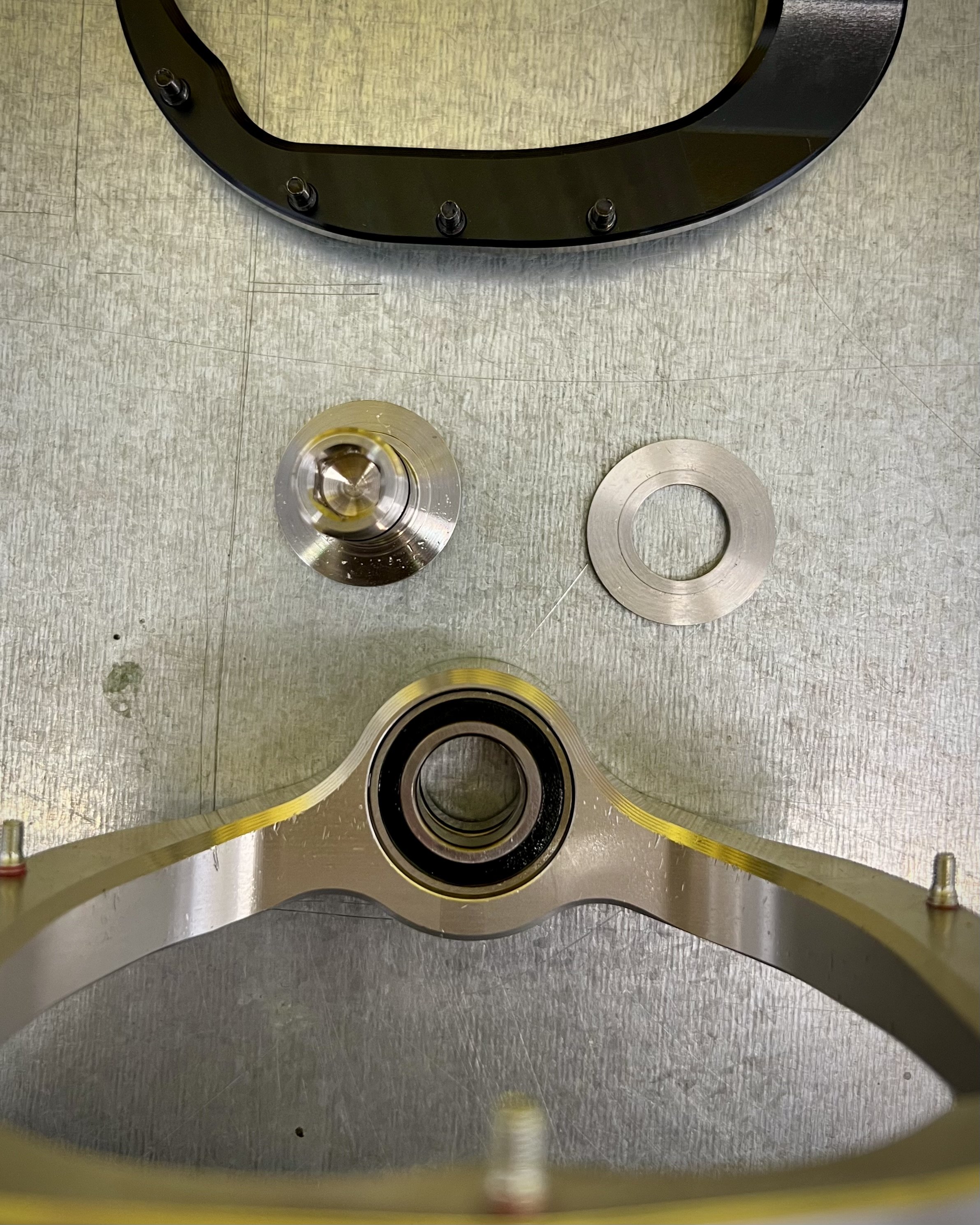Outlier MTB Pendulum Pedals
These almost all-new pedals from the all-new Canadien brand, Outlier MTB, flip the script on traditional pedal design.
Shunning the classic dual-sided symmetrical design, these Pendulum pedals switch to a single-sided silhouette. These strange-looking platforms come in at a hefty $299 CAD — or about £161 / €191 — but offer some great benefits.
The Idea
With a normal dual-sided pedal, the rider is rotating and standing on top of the axle. The thicker the pedal, the more the rider is balancing and rolling on top of the axle. This is why flat pedal designers have forever been trying to make their pedals as thin as possible; the closer the rider’s foot is to the centre of the axle, the more stable they are. A ‘heels-down’ stance is needed (a skill in itself) to keep your balance and stop your feet rolling forwards over the front of the axle in the rough stuff.
Traditional designs have an axle and (tiny) bearings that get in the way of lowering the platform as close to the centre of the axle as possible. Outlier did away with the axle altogether.
These aren’t an entirely new design — Shimano had something similar decades ago. So long ago, in fact, it was when toe clips were in fashion (for you young’uns out there, that’s why clip-in pedals are called ‘clipless’ even though you don’t clip into them — makes sense?). There was also a brand called Flypaper that appeared in the late 00s. These pedals placed the bearings inside a custom crank arm, and I heard some very positive reports about them back then — but unfortunately, the brand disappeared before they got a grip on the market. I also had a few messages from people who said they had something similar on the drawing board, and so did I for over ten years, thankfully, Outlier actually pulled their finger out and got it done so I could finally find out if they work!
#barnfind old school Shimano pedals with a similar idea.
Flypaper Flats.
Construction
The Pendulum Pedals are made out of 7075 aluminium, which is the go-to for stiff, durable MTB parts. They use 2x 7902 bearings which are angular contact: compared to standard cartridge bearings which only deal with radial loads, these bearings handle axial side loads too. This means that any moment force from the weight of the rider shouldn’t affect bearing life.
Black anodised or clear ano (raw look) are the only colour options. The weight comes in at 454g per pair — not heavyweights, but not the lightest option either, if that’s a worry. Outlier have placed a weight limit on these pedals of 110kg, though they look damn strong to me in all directions compared to some other flats on the market.
The threaded pins screw in from the back of the platform using a 2.5mm Allen key and have 6mm height.
The Pendulum offers a super sleek…
…and super clean design
Platform
The platform of these pedals is huge. The gap between the front and rear pins comes in about 113mm, which is similar to my previous favourite, Pedaling Innovations Catalyst (117mm) — a couple of cm longer than any other pedals on the market. Other examples are Hope F20’s at 95mm and OneUp around 101mm. They are also slightly asymmetrical to provide real estate for most riders who ride with a slightly duck-footed (toes pointing slightly outwards) stance. The width from the bearing cap to the outer pins is around 90mm which is similar to the other pedals shown (measuring the width is ambiguous depending if measuring from the pins or the usable part of the pedal.
I have a distinctly average UK 9.5 shoe size (US 10.5, EU 43) and I’ve liked the PI Catalysts for years now. These are pretty close in size, though due to the single-sided design, the overall size of the Pendulum is much smaller. Riders with bigger feet will surely feel a benefit over most normal pedals, but I’m not sure how riders with small feet will get on with these.
There isn’t any concave in the platform shape, but the lack of axle in the middle means it is as concave as much as your shoe and foot will squash through it when you put weight on them.
Grip
The grip offered by the Pendulums is exceptional — easily the most grippy pedals I have ever used, and I’ve tried most of them as a flats rider of 30 years. The threaded pins bite into the sole rubber and stay stuck like barbs compared to a smooth pin. More than this mechanical grip, when you stand on the pedal, the lack of material in the middle means your shoe presses through the pedal, moulds more around the platform, and won’t budge.
I also find with these larger platforms that I also found with the Catalyst’s is that the shoe will actually twist less on the pedal as its points of contact are further apart, which helps with grip and stability.
Along with the huge grip, thanks to the low-hanging design, my feet seem like they are trying to move much less than with any other pedal in the first place — so less reliance is placed on the mechanical grip.
I’d actually like to see a smooth pin option because I’ve caught these threaded stabbers a few times on my legs when moving the bike around and drawn blood easily — plus ripped my trousers and some knee pads.
The pins are as aggro as they can get, threaded and with 6mm height.
On the Trail
Firstly, I think some riders may need to adjust to riding with their feet further forwards than they may be used to. A mid-foot placement is needed (and what I think riders should use anyhow), and this is how I’ve been riding for years. Most flat riders’ feet naturally settle in this position. Placing the ball of the foot on the axle — as in traditional clip-in pedal setup — is not ideal in my view but that’s a whole other article in itself. Placing the ball of the foot in line with the axle centre on these doesn’t feel comfortable or right with these.
Descending is amazing. It’s simply easier to balance, especially when bombing through rough stuff. It also seems like the heels-down technique needed to keep your feet on flats is, first of all, easier to maintain as they drop naturally — but also, less needed than with a traditional pedal, without any feeling of your feet getting thrown forwards.
I also found the old “bunny hop scoop” technique feels easier and more natural.
One thing I didn’t expect was that these pedals seem to improve climbing: I feel like there’s less stress on my ankles and lower legs while pedalling. Normally all the muscles, tendons and ligaments in the foot, ankle and lower legs are working more to keep turning the cranks and also to stabilise your foot in the correct position on top of the axle at the same time. With the Pendulum, the pedal is always falling naturally to the bottom of the pedal stroke and helps to smooth out the circles spun by my legs.
Downsides
Make sure you don’t lose these parts if you’re travelling with the bike!
The downsides have been minimal. Firstly, I always need to take my pedals off my bikes to pack them in the van. When removed, the axle and spacer can fall out of the pedal, so you need to be careful not to lose any of these pieces on the way to the trail — or your riding day won’t get started. Also, with some cranks (Hope Evo, for example), an extra standard pedal washer is needed or the Pendulum washer can get stuck in the crank recess.
I’ve spoken to a few other riders who have been trying these out and both said they have a problem putting their feet onto the big old lump on the inside of the pedal where the bearings are housed — personally I have not noticed this at all. Maybe because I ride (and prefer) a slightly wider stance anyway, and maybe it’s just the way I place my feet back on the pedals.
Can you put your foot on the wrong side? Yes — and it’s not nice at all! During testing so far, after riding >15,000m up and 30,000-ish down, I’ve put my foot on the wrong side 15, maybe 20 times. I learnt to quickly twist my ankle as soon as I place my foot back on the platform to check I was standing on the correct side.
Additional rock strikes? Again, the riders I spoke to mentioned some extra ground strikes with these pedals, but they are riding DH bikes with very low BBs. My custom Ti-Ton-a-Tron BB is higher than pretty much everything out there at the moment and I haven’t suffered any more than the rare strike I’ve been getting with my other preferred platform, the Pedaling Innovations Catalyst. But, I have hit my shoes into the edges of the trail and rocks more often than with the Catalyst.
Measuring against other pedals, I don’t think they have much less ground clearance — even though they hang below the axle — the design is very slim and there are no pins on the underside to grab onto things either.
Durability
Another concern from riders is that the bearings on these will wear out quickly due to the load being put through them. These bearings are ginormous compared to the tiny bearings in most pedals — they’re still spinning extremely freely with no roughness.
One thing that can ruin a good set of flat pedals prematurely is damaging the pin threads in the pedal platform. Strip a few too many of these and your pedal is ready for the bin. The Pendulum design makes this essentially impossible as you will never strike the pins themselves into any rocks. The pins also have a larger diameter thread to screw into the pedal, and a smaller one to dig into your shoes. This means if you do damage a pin, it should be possible to remove and replace it without damaging the threads in the platform.
It’s nearly impossible to damage a pin or the threads, the generic sized bearings are huge and will be easy to replace without a specific pedal rebuild kit
Some comments also suggest these look thin and weak, but I clipped a rock hidden in the grass right on the corner of the pedal hard enough to bend a forged Pinion crank arm — and the pedal was fine. Though, the material around the pin did start to crack slightly. My pedals were from the first batch and Outlier say they have slightly modded the newer products to have more material outside of the pins to prevent this.
Clipping this rock nearly sent me OTB: Pedal 1 - 0 Crank
Great result for such a big strike!
The AstonMTB Verdict
Awesome!
Where all other flat pedals are essentially the same and there are only small differences in platform size, stability, and grip — these Pendulum Pedals really stand out as something different, with some major benefits in terms of grip and stability.
They’re damn expensive, but I predict they’ll outlast any other pedal on the market. If you’re not convinced by the single side design, there is also the dual-sided Void pedal. I have a pair of these on the way and am very interested to see how those perform too.
Check out my comp where you can win a pair of these Outlier Pedals!

